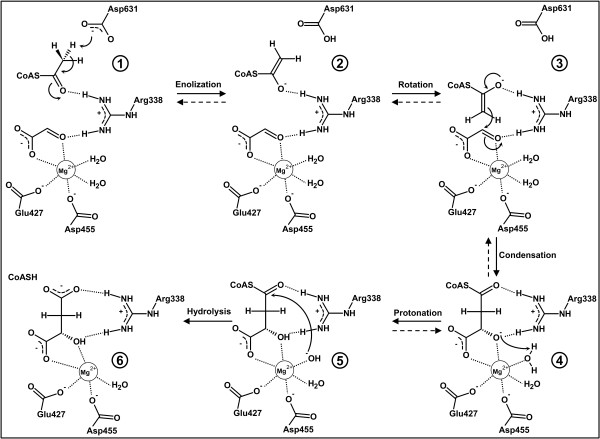Figure 9.
Previously proposed reaction mechanism for malate synthase (adapted from Howard et al., 2000). Residue numbers correspond to malate synthase G of E. coli. Asp631 abstracts a proton from the α-carbon of acetyl-CoA (1). The enolate intermediate (2) performs a nucleophilic attack on the carbonyl carbon of glyoxylate (3). The oxyanion in the newly formed malyl-CoA intermediate (4) is stabilized by the positive charges of Mg2+ and Arg338 [27]. The exact course of the following CoA thioester hydrolysis is not known. One of the water molecules coordinating the magnesium ion may be responsible for the protonation of the oxyanion resulting in the formation of a hydroxyl-anion (5), which subsequently attacks the CoA thioester bond [30] and facilitates the formation of malate and free CoA (6). The dashed arrows represent reversed reactions that have to be catalyzed by malyl-CoA lyases if this proposed reaction mechanism is correct.

